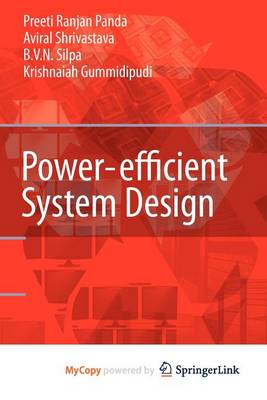The Information and communication technology (ICT) industry is said to account for 2% of the worldwide carbon emissions - a fraction that continues to grow with the relentless push for more and more sophisticated computing equipment, c- munications infrastructure, and mobile devices. While computers evolved in the directionofhigherandhigherperformanceformostofthelatterhalfofthe20thc- tury, the late 1990's and early 2000'ssaw a new emergingfundamentalconcern that has begun to shape our day-to-day thinking in system design - power dissipation. As we elaborate in Chapter 1, a variety of factors colluded to raise power-ef?ciency as a ?rst class design concern in the designer's mind, with profound consequences all over the ?eld: semiconductor process design, circuit design, design automation tools, system and application software, all the way to large data centers. Power-ef?cient System Design originated from a desire to capture and highlight the exciting developments in the rapidly evolving ?eld of power and energy op- mization in electronic and computer based systems. Tremendous progress has been made in the last two decades, and the topic continues to be a fascinating research area. To develop a clearer focus, we have concentrated on the relatively higher level of design abstraction that is loosely called the system level. In addition to the ext- sive coverage of traditional power reduction targets such as CPU and memory, the book is distinguished by detailed coverage of relatively modern power optimization ideas focussing on components such as compilers, operating systems, servers, data centers, and graphics processors.
- ISBN10 1441963898
- ISBN13 9781441963895
- Publish Date 24 July 2010 (first published 1 January 2010)
- Publish Status Withdrawn
- Out of Print 18 October 2014
- Publish Country US
- Imprint Springer
- Format Paperback (US Trade)
- Pages 264
- Language English
